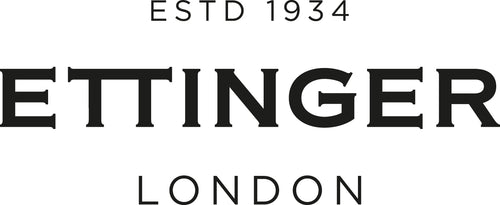After learning more about the foundation years and Gerry Ettinger on the first part of our 90 years of Ettinger series, we will now dive into the consolidation years of the business.
In the 1950s, after returning to London following WWII and re-establishing the business, Gerry seized the opportunity to purchase a factory in London's historic leather quarter. Ettinger had been commissioning orders of briefcases from the Prestwick Luggage factory since 1935, so when its owner retired, acquiring the factory was a natural progression for the business.

Press article mentioning the acquisition of the St John's Street factory.
The factory was located at No. 40 St John's Street in the Clerkenwell neighbourhood, near Smithfield's Market. In the 1930s, when Gerry started working with Prestwick Luggage, Clerkenwell was London's centre of leather trade. Unfortunately, very little evidence remains today of this once thriving trade in the area. However, a few remnants, such as stable doors on certain buildings and old winch arms on upper floors - once used to hoist raw materials - can still be spotted. Just behind Hatton Gardens, the famous jewellery street, sits Leather Lane, which is the most visible reminders of Clerkenwell's rich leather-working heritage.

St John's Street in the 1960s.
Smithfield Market played a pivotal role in the development of the leather trade in Clerkenwell as the butchers provided the raw hides, the starting point for any leather goods. These hides would be purchased and transported by horse and cart down to the river, where the tanneries were located. They would then treat the hides before selling the leather to artisans in the Clerkenwell factories. Here, skilled craftsmen would cut and shape the leather, preparing it for meticulous stitching into a variety of leather accessories that were in great demand from an upmarket clientele.
Over the centuries, London had earned a distinguished reputation for the style and quality of its leather goods, known for being both refined and practical. This rich tradition of craftsmanship was a key reason why Gerry chose to establish his leather goods business in St John's Street.
Acquiring this factory enabled Ettinger to expand its range significantly, offering his clients a variety of innovative accessories.
Amongst these were one of the first smaller leather bags, the golf shoulder bag, which had an adjustable shoulder strap, a pocket for pencil and a compartment at the bottom for two golf balls. Around this time, Ettinger also began designing travel accessories, releasing a travel brush in 1959.

Archive photos of Ettinger's golf shoulder bag and travel brush.
Beyond creating leather goods, Ettinger enhanced its collection by reselling other luxury brands. In 1963, Ettinger became the UK agent for the Tensor lamp, an innovative folding lamp ideal for close work or reading. Featured in newspapers as a ground-breaking novelty, it further elevated Ettinger's reputation.

Archive advert of the Tensor Lamp from the 1960s.
The 1960s and 70s were transformative years for Ettinger, as the company flourished and established itself as one of the UK's most esteemed leather goods designers and manufacturers. With a deep reliance on the craftsmanship of the St John Street factory, Ettinger produced timeless leather pieces that solidified its reputation as a cornerstone of British luxury.
In 1980, Robert Ettinger, Gerry's eldest son, joined the family business and later became the new CEO of Ettinger, marking the beginning of a new chapter in the company's history - one that would soon be shaped by his vision and leadership.



